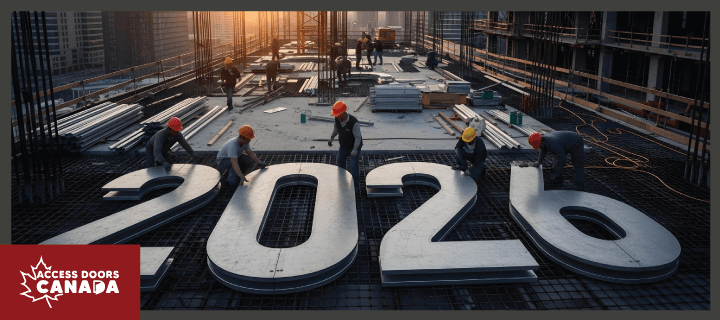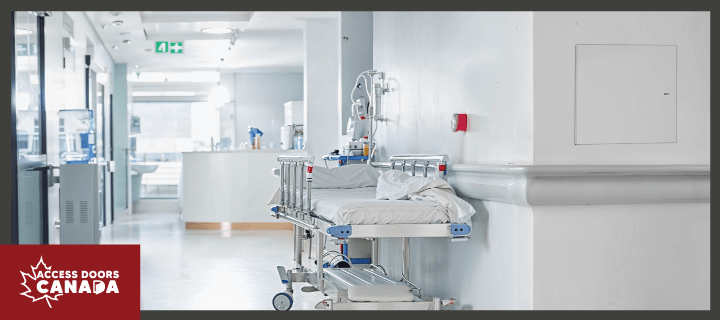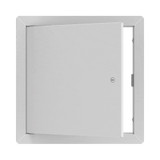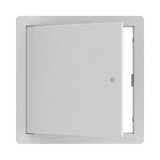How Access Doors Help Canadian Buildings Achieve Net Zero
As the world continues its push toward sustainability, Canada has emerged as a leader in environmental efforts, with the ambitious goal of achieving net-zero carbon emissions. This commitment extends to buildings, accounting for a significant portion of greenhouse gas emissions.
To meet this target, Canadian construction practices have embraced innovative strategies, materials, and technologies. Among these, access doors play an understated but essential part in enabling buildings to align with net-zero principles.
What Does Net-Zero Mean for Canadian Buildings?
Net-zero buildings address one of the world’s critical challenges: energy consumption. These innovative structures are designed to generate as much energy as they consume annually, creating a balance that reduces their environmental impact.
In Canada, the commitment is clear. By 2030, all new buildings will adhere to net-zero energy-ready standards. Expanding this approach not only supports global climate goals but also drives valuable investments in the construction industry. This shift strengthens local economies, creating clean energy jobs and fostering a cycle where sustainable practices fuel both environmental progress and economic prosperity.
The Role of Access Doors in Net-Zero Buildings
By offering access to essential systems while preserving energy performance, access doors and panels are a quiet yet impactful element of sustainable design. They play an integral part in net-zero construction in Canada, supporting efficiency and environmental progress seamlessly.
Let’s take a closer look at how they contribute to greener buildings.
Facilitating Renewable Energy Integration
Extreme weather highlights the need for proper insulation to ensure energy efficiency. Poorly insulated structures face significant heat loss during winter and heat gain in summer, forcing HVAC systems to work harder and increasing energy consumption.
Access doors with insulated panels play a crucial role in maintaining a building’s thermal envelope. By preventing air leakage and minimizing thermal bridging, these doors support efficient heating and cooling system operations, making them an essential component of energy-efficient design.
One standout insulated access door is the ADC-XTS super-insulated SS exterior panel. With its advanced insulation and weather-resistant features, it supports the objectives of minimizing energy waste and maximizing the durability of exterior systems.
Key Benefits of the ADC-XTS
Enhanced Energy Efficiency
The ADC-XTS comes equipped with 2-inch PIR (Polyisocyanurate) insulation and an impressive R-value of 13. This advanced design minimizes heat transfer, helping maintain consistent interior temperatures.
Whether your project involves heating or cooling systems with moderate demands, this access door helps reduce energy consumption by creating a reliable thermal barrier.
Weather-Resistant Sealing
Energy efficiency starts with keeping the elements out. The ADC-XTS from Access Doors Canada uses EPDM foam and silicone rubber seals to provide exceptional resistance to air and water infiltration. By preventing drafts and moisture from entering, these seals play a vital role in reducing energy loss and enhancing the overall performance of insulated systems.
Exceptional Durability
Crafted from 16-gauge galvanized steel, this door offers long-term resilience even under tough conditions. Its robust construction ensures that insulation remains effective and external factors like weather or impact don’t compromise the energy efficiency of the system it protects.
Streamlining Sustainable Water Management
Water conservation is an important part of net-zero construction. Many buildings in Canada often use systems like rainwater harvesting and greywater recycling to reduce water use.
Access solutions make it easier to reach plumbing and water storage systems, keeping everything running as it should.
With these doors, checking and maintaining hidden systems becomes much simpler. They allow for quick access without unnecessary hassle, helping water-saving systems stay efficient and effective. This thoughtful feature supports the building’s efforts to conserve water and promote sustainability.
Supporting Retrofitting for Existing Buildings
Retrofitting older Canadian buildings is essential for meeting net-zero standards. Many of these structures require updates to insulation, energy-efficient systems, and renewable energy technologies.
Without proper access, retrofitting can be complicated and disruptive. Access doors address this challenge by creating entry points for maintenance and system upgrades, ensuring the process is smoother and more efficient.
Ensuring Smooth Operation of Key Systems
For a building to run efficiently, its systems need to be accessible for regular upkeep. HVAC units, electrical panels, and plumbing systems often require adjustments or repairs, and access doors make reaching these components much simpler.
Without access doors, reaching critical systems can involve time-consuming and disruptive methods, such as cutting through walls or removing ceiling panels. These processes not only delay maintenance but can also lead to added repair costs and inconvenience for those using the building.
Reducing Maintenance Costs
Access doors are all about making maintenance easier and less of a hassle. By offering quick and straightforward access to hidden systems like plumbing, electrical wiring, and HVAC components, they save time and effort during repairs or regular inspections. This translates to lower labor costs and fewer disruptions, which is a win for everyone.
Over time, these savings really add up, making access doors a smart choice for anyone looking to keep budgets in check. Plus, when maintenance is easier, systems stay in better shape for longer, helping to avoid those unexpected repair bills.
Encouraging Passive Design Strategies
Access doors don’t just help with repairs—they can be a key part of modern, energy-efficient design. When paired with features like insulated walls or airtight enclosures, they work to support your building’s ability to conserve energy.
By integrating access doors into these systems, you’re helping reduce energy waste while also lowering utility bills. It’s a thoughtful addition that aligns with sustainable building practices, making it easier to create a space that’s both eco-friendly and cost-effective in the long run.
To Sum Up
Canada’s push for a greener future is reshaping the construction industry, driving the creation of eco-friendly, net-zero buildings. Access doors are a key component of this transformation, enhancing energy efficiency and supporting sustainable design.
Explore how you can make a difference—browse our options today. Request a quote or call us at (800) 679-3405 to learn more about how we can support your project.









